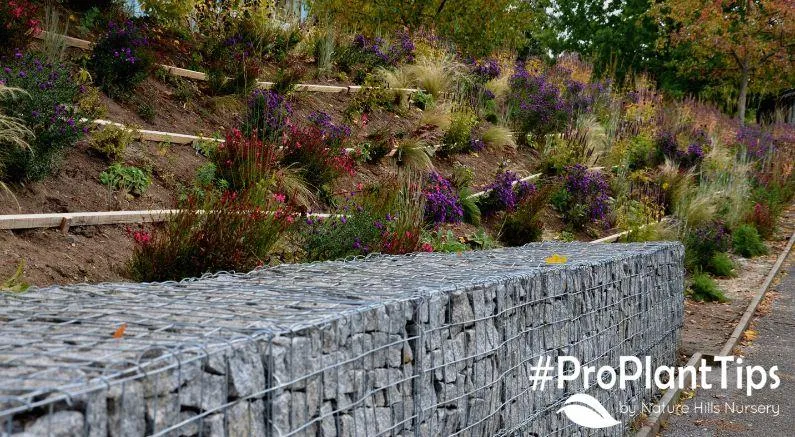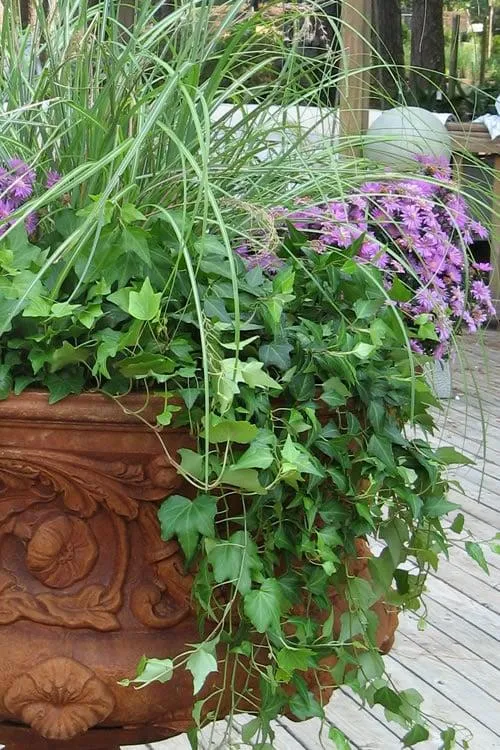Flowers that Cascade Over Pots – Choosing the Best Options for Your Home or Garden
If you’re looking to add some extra beauty and color to your outdoor spaces with flowering vines or plants that spill gracefully over the edges of pots, you’ve come to the right place. In this article, I’ll explore some of the top flowering options for cascading over pots, along with tips for care and maintenance. By the end, you’ll have a good idea of which varieties might work best for your needs.
Considerations When Choosing a Cascading Flower
There are a few key factors to weigh when selecting flowers that will cascade beautifully from containers:
- Size: Make sure to choose vines or flowering plants suited to the size of your pots. Dwarf or trailing options work best for hanging baskets or smaller planters, while taller varieties need roomy urns or large pots to properly cascade from.
- Bloom Time: Consider when and how long each flower blooms to ensure seasonal color. Many cascading options provide months of blooms during the warm seasons.
- Care Needs: Low-maintenance varieties that don’t require pruning or staking are easiest. Check watering needs as well – some flowers flourish with occasional deep watering versus daily sprinkles.
- Hardiness: Pick flowers suited to your climate zone that can withstand your region’s heat, cold, and conditions without damage. Most cascading flowers prefer full sun.
Top Flowering Options for Cascading Over Pots
Now let’s explore some of the most popular flowering vines and plants suitable for gracefully spilling over the edges of containers:
Petunias
Petunias are a classic cascading flower choice and for good reason – they provide months of colorful blooms with minimal care. Choose from many varieties in shades of pink, purple, red, white and more. The trailing petunias stay compact and continue flowering all season long. Deadheading keeps the show going. Full sun suits them best.
Bacopa
Also called snoopy vine, bacopa trails beautifully with small white, pink or purple flowers. It’s one of the easiest vines to grow, thrives in shade or sun, and remains flowering for a long period. Prune occasionally to maintain a neat, cascading shape. Bacopa tolerates both heat and humidity well.

Verbena
Verbena comes in many varieties like the popular ‘Homestead Purple’ with lavender blooms. Heat and drought tolerant, verbena requires minimal care beyond sunshine and occasional watering. Deadhead regularly to extend its flowering time from summer into early fall. Verbena tends to spread, so it works well in hanging baskets where it can flow freely.
Sweet Alyssum
With tiny, fragrant white or purple blooms, sweet alyssum spreads quickly to form a lively, trailing carpet. It thrives in sun or partial shade. This flowering groundcover adds grace to pots but also acts as an effective deterrent against insects. Deadhead to keep it looking bountiful and blooming strong into fall.
Creeping Jenny
Also called moneywort, creeping Jenny forms a dense green mat dotted with small pink or white flowers. It’s one of the hardiest groundcover options, tolerating heat, drought, and shade with ease. Creeping Jenny spreads aggressively by ground-creeping stems, so consider using it in confined planters where it won’t escape boundaries. Deadhead sporadically.
Ivy Geranium
Ivy geranium lends bold splashes of fuchsia, red, pink, purple, white or salmon blooms to any pot. It remains flowering for months on end with little care beyond pruning as needed and ample sunshine. Drought tolerant, ivy geranium grows well cascading from hanging baskets or spilling over the edges of large urns. It’s sure to brighten any outdoor area!
Lantana
Lantana creates a mounded, bushy shape perfect for tumbling artfully over the sides of pots. Its abundant blooms exist in mixtures of oranges, yellows, reds and pinks – sometimes all on one plant! Lantana thrives in heat and full sun with only occasional watering. Its flowers attract butterflies. Prune lightly as needed to maintain a cascading form.

Vinca Vine
Sometimes called periwinkle, vinca vine trails attractively with glossy, dark green leaves and large, solitary flowers in blue, white or pink. Low maintenance and extremely hardy, vinca vine loves sun but tolerates partial shade too. It spreads vigorously, so plant it where it can cascade downward freely without escaping boundaries. Deadhead after blooming ends.
Tips for Growing Cascading Flowers
With the right care, your chosen cascading flowers should thrive gracefully spilling over containers all season long. Here are a few additional tips:
- Provide pots that are at least 12 inches deep for proper rooting depth.
- Use a well-draining potting soil amended with compost for optimal drainage and nutrients.
- Water deeply only when the top few inches of soil becomes dry, then allow to dry out slightly between waterings.
- Fertilize monthly with a water-soluble plant food to boost growth and flowering.
- Prune as needed to help vines, groundcovers, and blooms cascade beautifully over the edges and prevent overgrowth.
- Deadhead spent blooms to prolong repeated flowering through fall.
- Place pots in full sun for 6+ hours daily unless shade is preferred.
- Mulch around pots’ bases to retain moisture and suppress weeds.
- Move pots indoors before first fall freeze or cover if cold sensitive.
With some simple care and the right flower choices tailored to your climate, you can enjoy a bounty of colorful blooms casually spilling over pots for many enjoyable months. From my experience, combining popular cascading flowers like petunias with trailing vines like vinca creates a stunning effect that enhances any outdoor space! I hope this guide has provided some inspiration for brightening your yard or patio with decorative flowers that take cascading beauty to new heights. Let me know if you need any other gardening tips.
Pots for Cascading Flowers
| Type of Pot | Size | Best Flowers | Care Tips |
|---|---|---|---|
| Terracotta | 12 inches or larger | Petunias, wave petunias, fuchsias | Terracotta absorbs water, so water thoroughly then allow to dry slightly between waterings. |
| Plastic | 10 inches or larger | Ivy, lipstick vine, sweet potato vine | Plastic retains moisture well, so be careful not to overwater. |
| Metal | 14 inches or larger | Nasturtiums, sweet peas, morning glories | Metal conducts heat, so pots may dry out faster. Check soil daily. |
| Wood | 12 inches or larger | German ivy, English ivy, wax begonias | Wood absorbs water like terracotta. Water thoroughly then allow to partially dry between waterings. |
| Basket | 10 inches or larger | Creeping Jenny, Cobra plant, ivy | Baskets dry out very quickly. Water daily and check soil moisture frequently. |
FAQ
-
What kind of flowers cascade best over pots?
Ivy is truly amazing for cascading over pots. It grows basically anywhere and sorts of hangs there looking lovely. You can also try nasturtiums, which come in awesome colors.
-
How long do cascading flowers last in a pot?
It depends on the flower type. Ivy will stay green for months. However, annuals may fade after a few weeks, despite your best efforts. Perennials could remain all summer, if the conditions are right. The pot location also makes a difference. Too much sun might dry them out more quickly.

-
Is it difficult to care for cascading potted flowers?
Not really! Cascading flowers are actually pretty easygoing. Give them sunlight and water like normal flowers. Fertilize monthly or so. The flowers will basically take care of themselves. It’s not too much work to maintain that gorgeous overflowing look.
-
What’s the best way to plant cascading flowers in pots?
You’ll want to use a deep pot so the roots don’t run out of room. Fill with good potting soil. Place yourcascade plant or seedlings around the edges. As they grow over the sides, the tendrils will take hold by themselves. Perhaps add a few support sticks initially if needed. Water well and admire your handiwork!
-
Do cascading potted flowers attract pollinators?
Certainly! According to botanist Dr. Jill Bloom, flowers that hang over the sides of pots are incredibly attractive to helpful bees and butterflies. They provide dazzling nectar bars right at butterfly-eye level. Your cascading blooms may draw in all sorts of amazing pollinators to your yard. It’s truly nature’s ballet performed just for you!
-
Is it hard to overwinter potted cascading plants?
For perennials, you have some options. Move the pot to a sheltered spot before frost. Or place in your garage or semi-heated basement. Another choice is to trim the plant back and tightly cover the pot with leaves or mulch. Some gardeners actually bring the pot indoors for winter – if you have the space. With care, your gorgeous cascading plant may rebound next spring.
-
What if my cascading flowers don’t look very full?
No worries – there may be simple fixes. Check if the pot needs a larger size. More room equals bigger growth. Try cutting the plant back hard in spring to force new growth. Fertilize regularly using a balanced formula. Give your plant plenty of sunlight each day. With a little TLC, it should fill out that pot spectacularly in no time.

